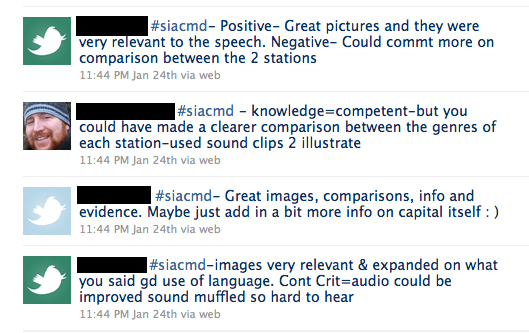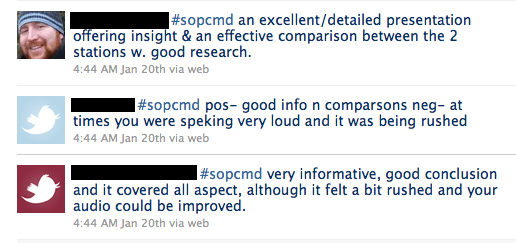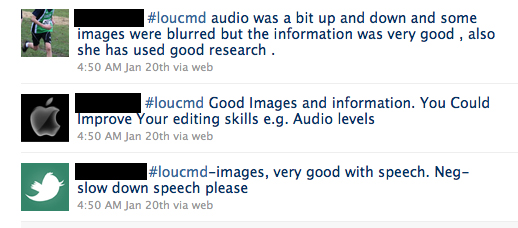 This week I have learned that keeping a discussion going (even on Twitter) is not always easy, particularly when you are a busy teacher. I must look into “automated reminders / retweeting” – I use “twitterfeed” to link my blog to Twitter. There must be a service that could retweet an individual tweet each day to remind people in my PLN to contribute and to catch those people who perhaps missed the tweet the first time. I tweet a lot so my tweets don’t hang around forever. On the other hand I don’t want to send so many reminders that my entire PLN turn against me due to my incessant nagging!
This week I have learned that keeping a discussion going (even on Twitter) is not always easy, particularly when you are a busy teacher. I must look into “automated reminders / retweeting” – I use “twitterfeed” to link my blog to Twitter. There must be a service that could retweet an individual tweet each day to remind people in my PLN to contribute and to catch those people who perhaps missed the tweet the first time. I tweet a lot so my tweets don’t hang around forever. On the other hand I don’t want to send so many reminders that my entire PLN turn against me due to my incessant nagging!
I have also learned that there are not that many English teachers in my Twitter PLN. This is perhaps because I spend a lot of time connecting with people whose primary interest is #edtech – which is my primary interest as well. I used “wefollow” to find and add some more English teachers to my PLN.
After the great start made last week when I initially posted about the #edread project’s progress I have already shared some of the ideas and resources with my colleagues. This week will be no different as several people have shared some interesting websites and resources since last Sunday. Please read through the tweets below and click on the links.
Don’t forget that there is a full archive of #edread tweets here. And there is a dedicated page here.
I think that I should get students involved in this discussion. I have used Twitter in the classroom and know that it works. Should I give them the hash tag and ask them to tweet? What are the implications? Or should I use a different methodology – in class survey, through our school VLE or Survey Monkey? Any thoughts or ideas about this would be welcomed. I believe that they are the most important voice in this discussion so they should be included!
- tombarrett: 8 Interesting Ways to Teach Reading Comprehension in the Classroom http://bit.ly/cTcQ21
- literacyadviser Make sure you have good quality non-fiction texts in your school/class/library.
- literacyadviser Recognise as reading all of the texts your students engage in.
- literacyadviser For those who say they don’t like reading make sure they are aware of the things they already read.
- literacyadviser Encourage kids to read aloud at every opportunity, but not in public unless they are ready and willing.
- jamesmichie teaching kids 2 read critically is not just about books but should include films as well: http://bit.ly/bQ2pcJ (via @dannynic)
- jamesmichie RT @russeltarr: 8 tips to to help your child to read http://tinyurl.com/nbtcub
- mccandjt check out what we do here; http://sites.google.com/site/bbecenglishlessonsandhomework/reading-week
- mccandjt http://sites.google.com/site/theclassroomofmscox/teachers–territory/reading—promoting-it/reading-initiatives
- stevebunce: RT @storytellin: Digital Storytelling Cookbook: http://bit.ly/7iiVF1
- jamesmichie: new blog post: What I Did With My Year 8s Yesterday… http://bit.ly/9FlLVQ
- @mccandjt:http://bit.ly/brFbDj
I hope that if you are reading this you are finding it useful? If you have not contributed yet please join the discussion and share your ideas via Twitter using the hash tag #edread.






